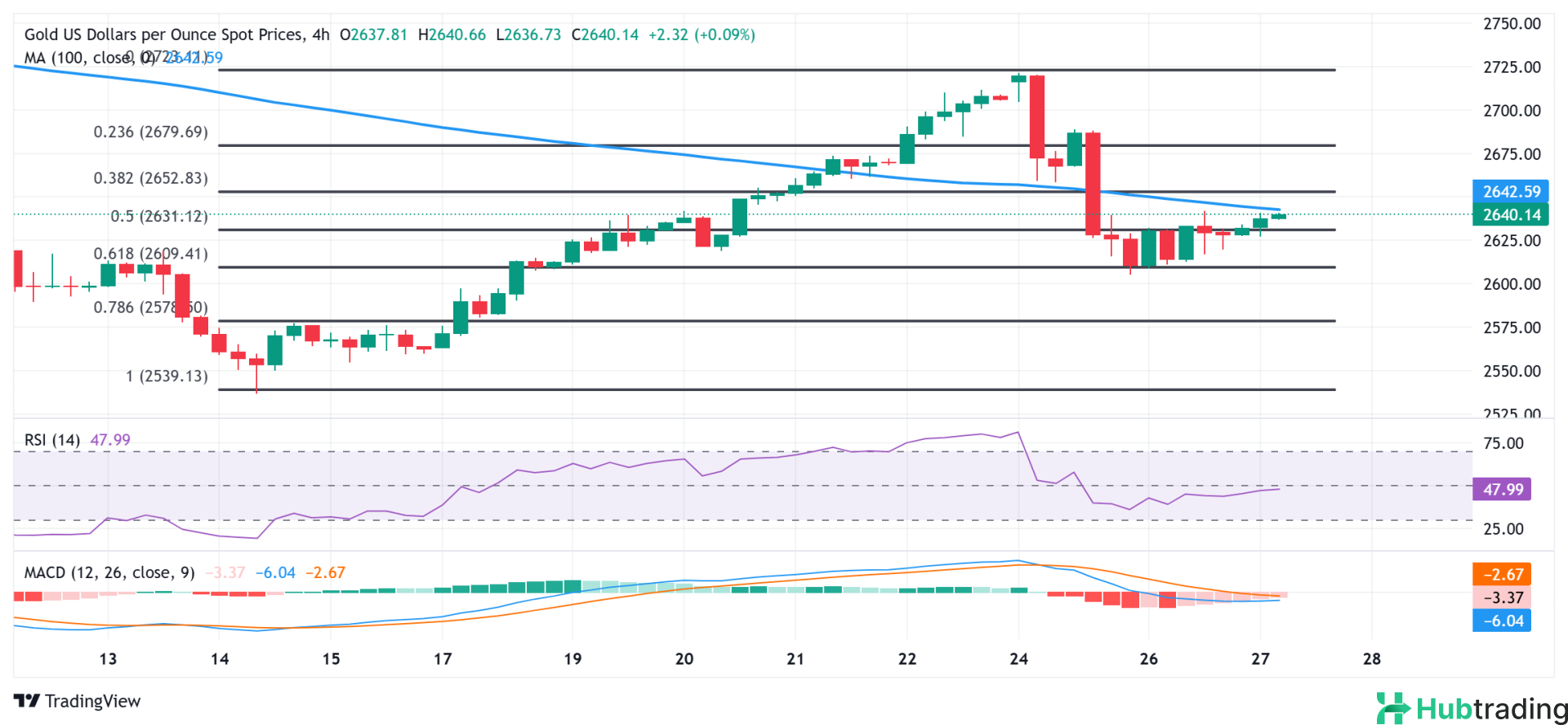Gold price (XAU/USD) builds on its rebound from the $2,600 area—a one-week low—extending its steady climb during the European session on Wednesday. This marks the second consecutive day of gains, driven by a global flight to safety amid heightened geopolitical risks and US President-elect Donald Trump's proposed tariffs. Additionally, declining US Treasury bond yields keep the US Dollar (USD) subdued near its weekly low, further supporting the precious metal.
The upward momentum pushes Gold prices to a two-day high near the $2,650 mark. However, expectations of slower interest rate cuts by the Federal Reserve (Fed) could limit further gains for the non-yielding asset. Moreover, a broadly positive risk sentiment advises caution before adopting aggressive bullish positions on XAU/USD. Traders now await the first revision of the US Q3 GDP data and the US Personal Consumption Expenditure (PCE) Price Index for near-term trading cues during the early North American session.
Gold Prices Hold Firm Amid Trade War Fears and Geopolitical Tensions
- Gold prices remain supported by persistent safe-haven demand, fueled by ongoing trade war concerns and geopolitical risks. US President-elect Donald Trump's commitment to imposing tariffs on all imports from Canada, Mexico, and China has spurred additional buying interest in gold.
- Geopolitical tensions remain high, with Ukraine reporting its largest Russian drone attack on Tuesday.
- Last week, Russia deployed a hypersonic missile in Ukraine and continues its offensive at the fastest pace since its 2022 invasion. Reports also suggest that North Korean troops are aiding Russia in Ukraine, while Ukraine has struck targets deep within Russian territory using Western-supplied missiles, heightening fears of further escalation.
- In the Middle East, tensions have eased slightly following US President Joe Biden's announcement of a ceasefire agreement between Lebanon and Israel, effective 02:00 GMT Wednesday.
- The Conference Board revealed on Tuesday that the US Consumer Confidence Index rose to 111.7 in November, its highest level since July 2023, up from 109.6 in October.
- Meanwhile, minutes from the Federal Reserve’s November 6-7 meeting highlighted divisions among officials regarding future rate cuts and economic direction.
- The CME Group’s FedWatch Tool indicates a 63% probability of a 25-basis-point rate cut by the Fed in December.
- President-elect Trump's nominee for US Treasury Secretary, Scott Bessent, is reportedly considering a more gradual approach to tariffs to address the budget deficit.
- The 10-year US Treasury yield remains steady above its recent two-week low, while the US Dollar consolidates near its weekly low, providing additional support to gold.
- Investors now turn their attention to Wednesday's US economic releases, including the preliminary Q3 GDP report and the Personal Consumption Expenditure (PCE) Price Index, for fresh trading cues during the North American session.
Gold Price Above $2,650 Could Open Door for Further Gains
![]()
From a technical standpoint, Tuesday's rebound from the 61.8% Fibonacci retracement level of the recent recovery, coupled with subsequent strength, supports a bullish outlook. However, daily chart oscillators have yet to confirm a clear positive bias, suggesting the upward move may face significant resistance near the 100-period Simple Moving Average (SMA) on the 4-hour chart. This resistance, situated around the $2,645 mark, must be overcome for gold prices to advance toward the $2,665 level, with further targets at $2,677-$2,678 and ultimately the $2,700 psychological barrier.
On the downside, the $2,624-$2,622 region offers initial support, followed by the critical $2,600 threshold. A decisive break below this level could shift momentum in favor of bearish traders, exposing the 100-day SMA near $2,569-$2,568. Further declines may target the monthly swing low at $2,537-$2,536. Failure to hold these support levels could signal a resumption of the broader correction from the $2,800 all-time high reached in October.






